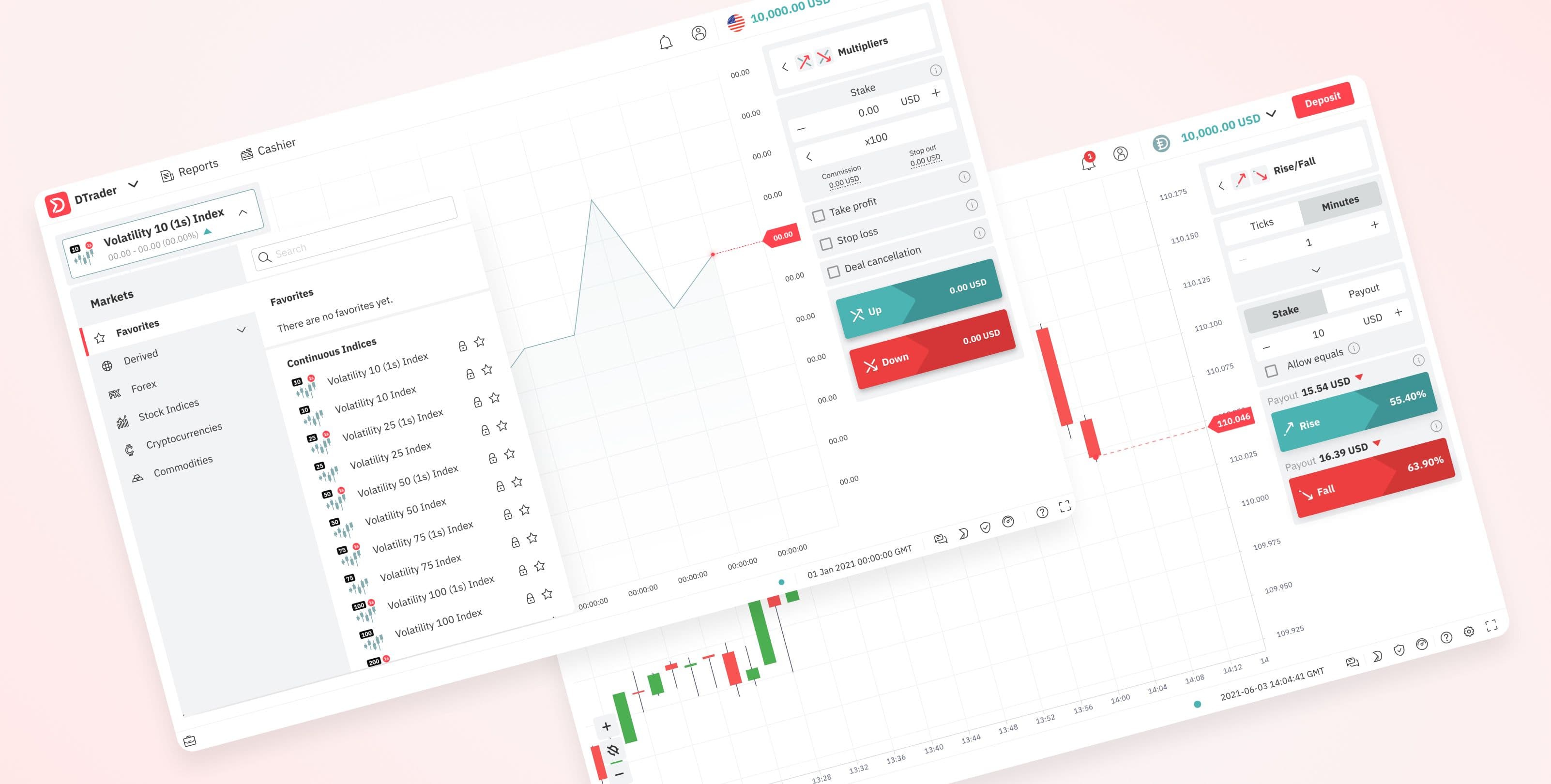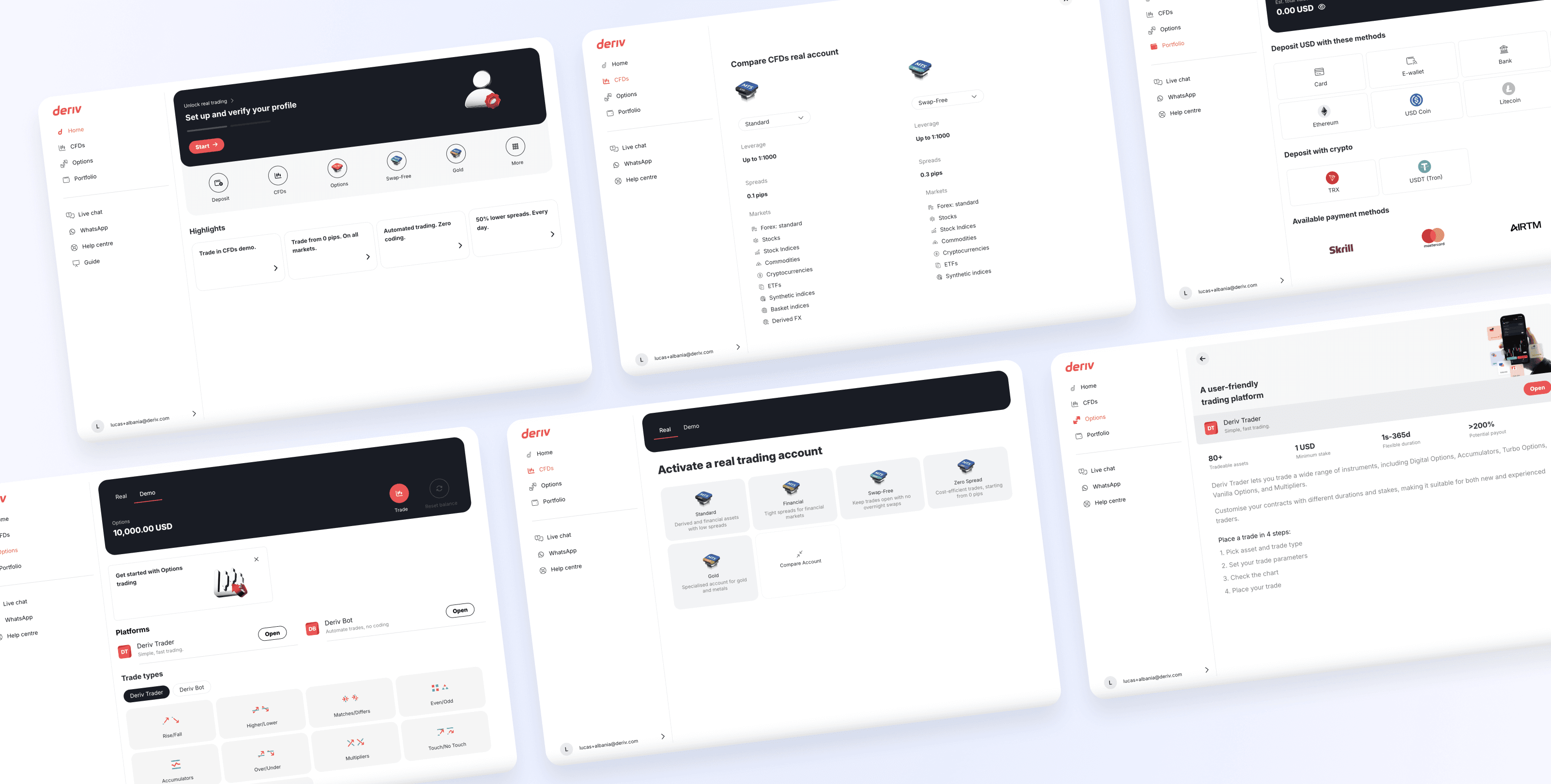Deriv Mobile App
I led the design of Deriv's first mobile app when it launched in February 2021. After hearing from users, I led the team through a complete redesign that went live in October 2022.
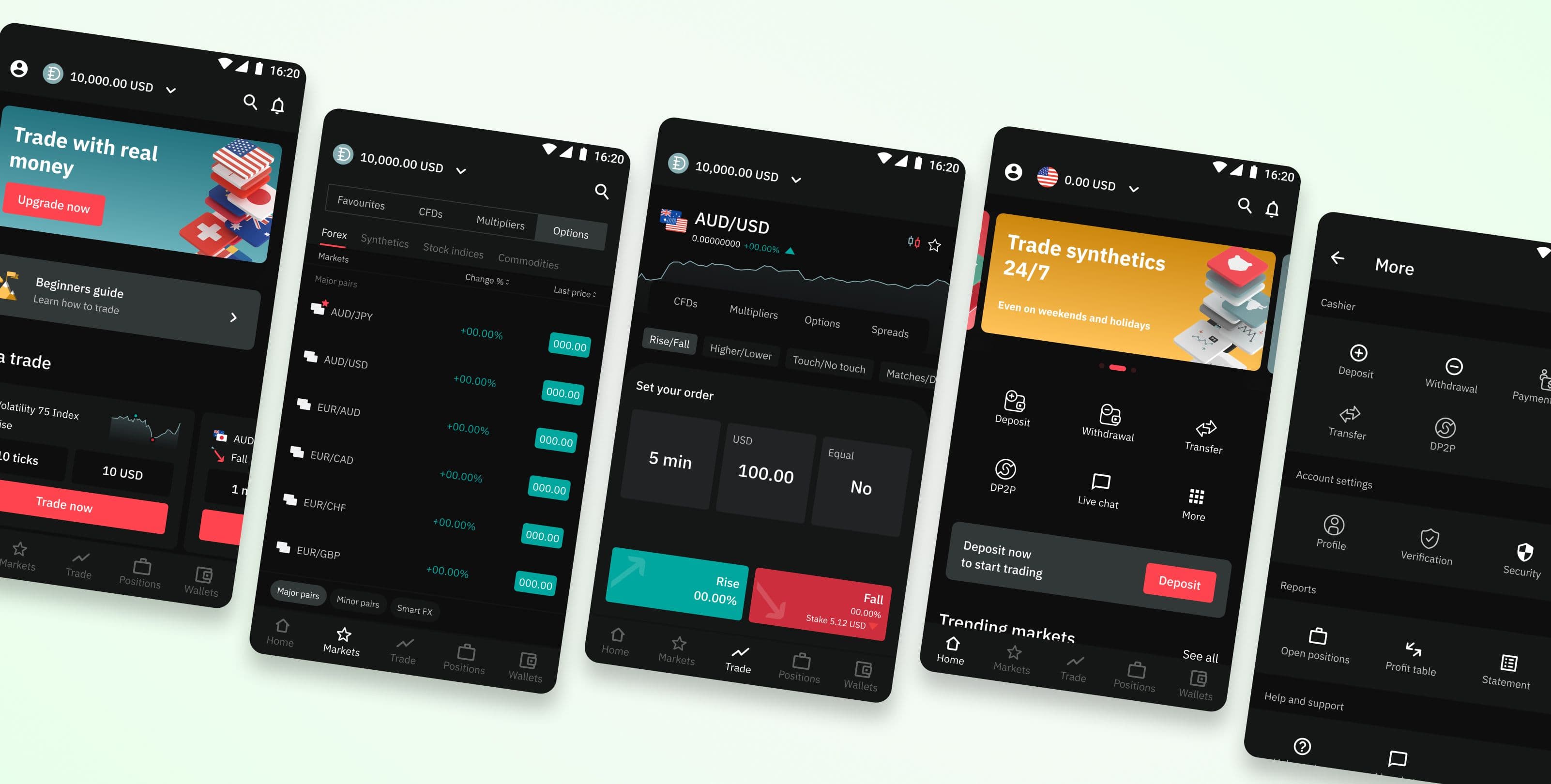
My Role
As the UIUX team lead, I:
- •Led design for iOS and Android native apps using Flutter
- •Conducted 10 user interviews personally (140 total by team)
- •Designed mobile-first UI patterns and components
- •Collaborated with development team on technical constraints
The Mobile Imperative
By 2021, analytics revealed that 62% of website visits came from mobile devices, yet the mobile web experience had a 73% bounce rate. Competitors like eToro and Plus500 were capturing market share with dedicated mobile apps, while Deriv relied solely on a responsive web platform.
The business case was clear: develop a native app or risk losing relevance in an increasingly mobile-first trading landscape.
Market Analysis
- 62% of users accessed via mobile
- 73% mobile web bounce rate
- 3 major competitors had native apps
- $2.3M estimated revenue opportunity
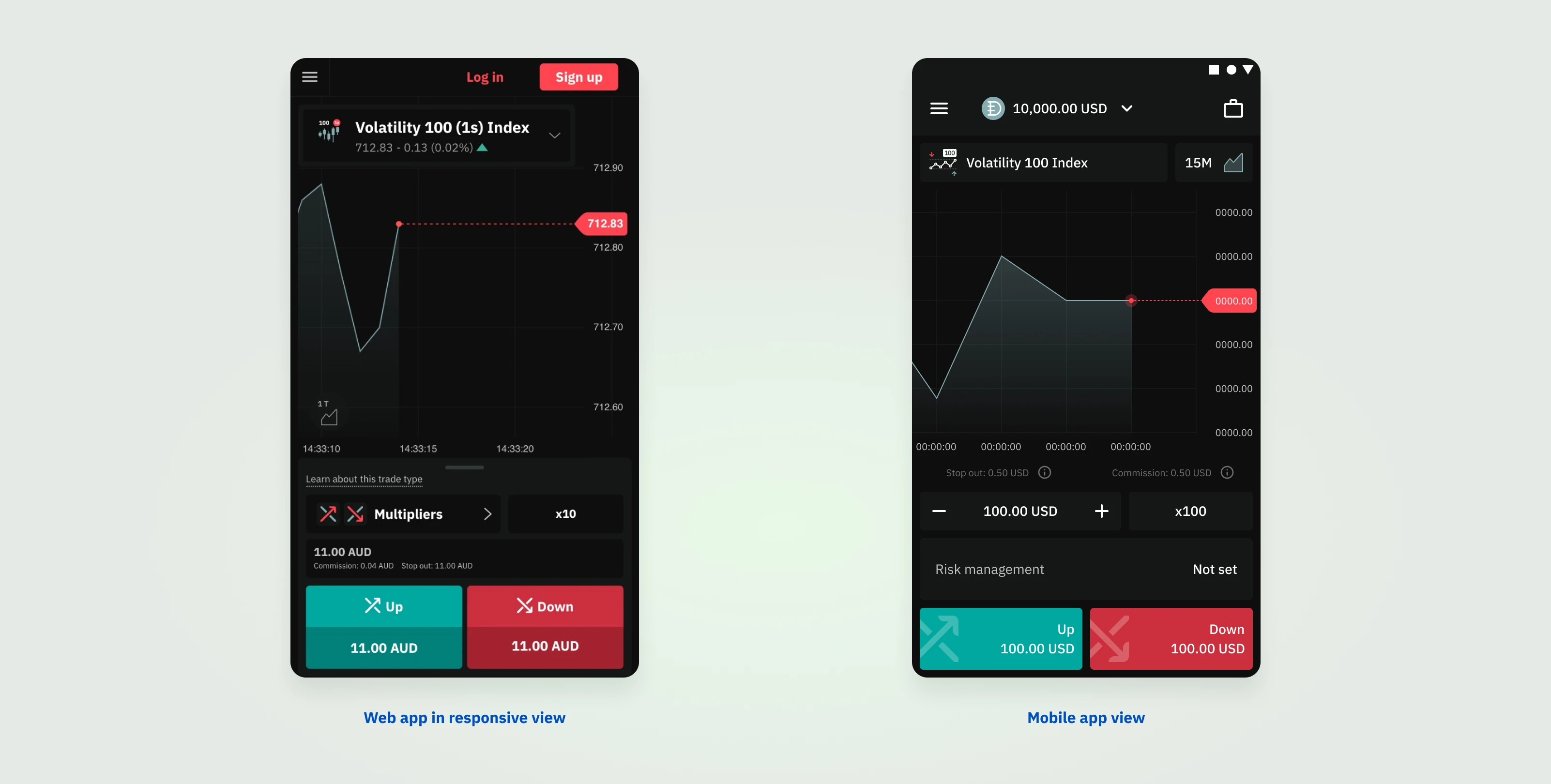
Initial MVP Release - Web responsive vs Native mobile
MVP Strategy
To meet the aggressive timeline, I launched with only the Multiplier trading type, Deriv's most popular product representing 40% of trades. This MVP approach let me validate core assumptions while gathering critical user feedback.
Designing for Thumbs
Adapting the web interface for mobile screens meant rethinking the UI patterns. Bottom sheets became the primary interaction pattern for contract specifications, making them easy to reach with your thumb.
Beyond bottom sheets, I redesigned key components like position pages and navigation menus to follow mobile-first principles, ensuring a native feel that users expect from mobile apps.
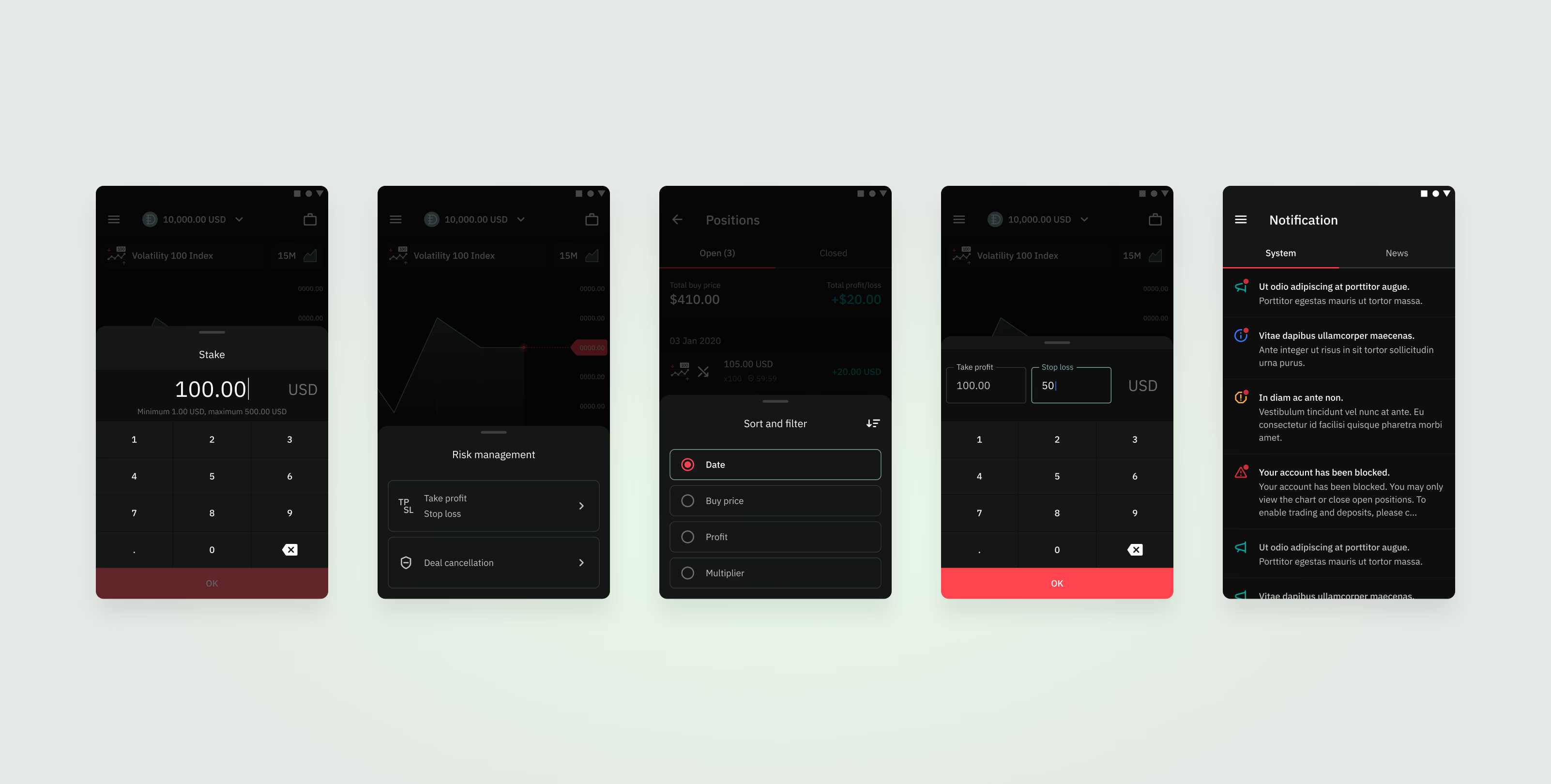
Mobile-First UI Patterns
Receiving Early Feedback
The initial release beat the download targets, especially on Google Play where as most Deriv's users are on Android. While the app performed well technically, store reviews showed a clear pattern: users wanted access to complete trading suite, not just Multipliers. This feedback made me dig deeper.
To validate these concerns, I led my team and ran 140 structured interviews with early adopters (I personally did 10). The results were decisive. 114 out of 140 users explicitly wanted the full trading experience they were used to on the web platform. Many also pointed out they needed professional tools like chart indicators and drawing capabilities, backing up the feedback in app store reviews.
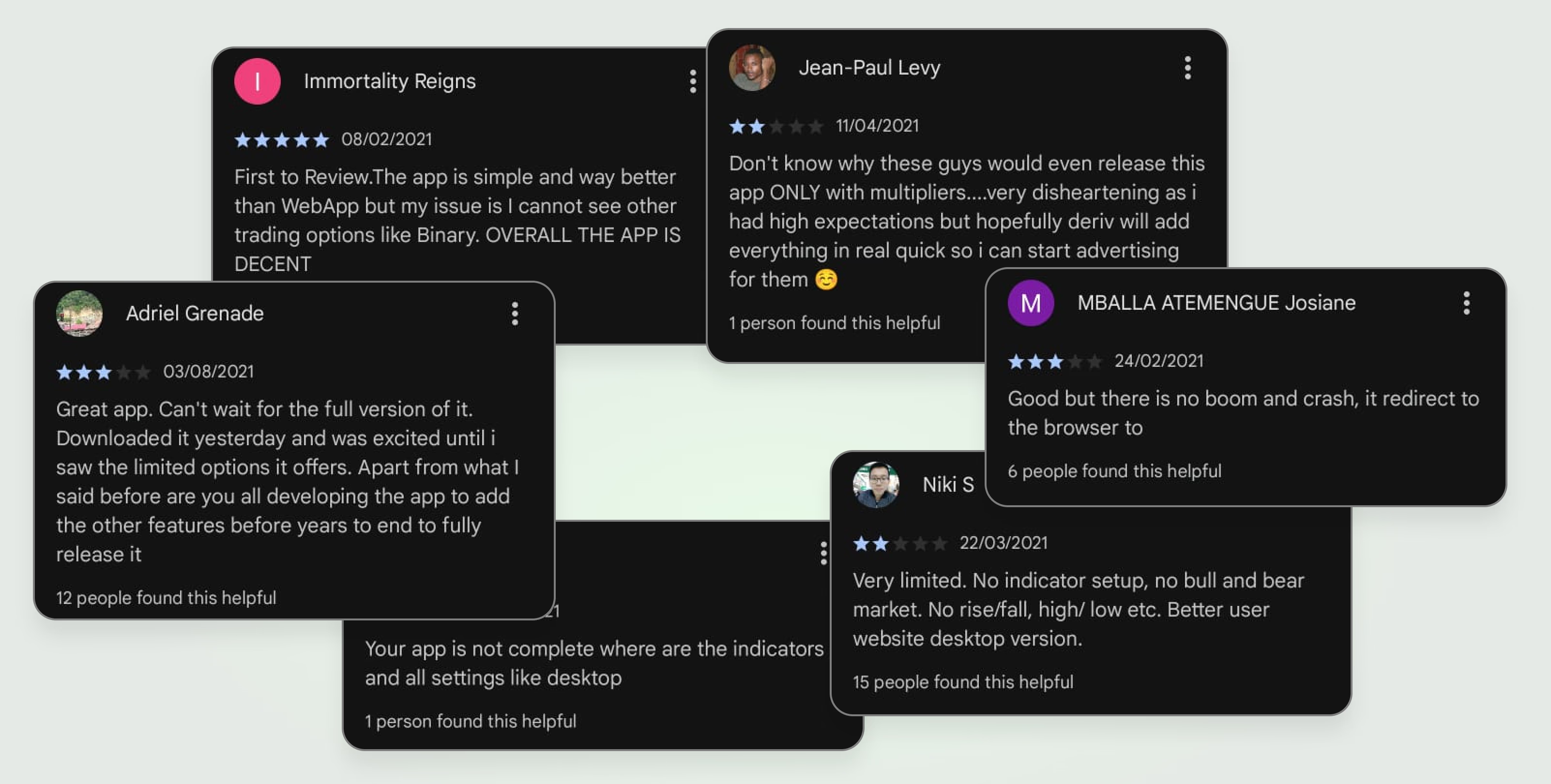
User Research and Feedback Collection
Research Findings
From 140 user interviews and 500+ app store reviews:
What worked well:
- ✓92% praised the clean interface
- ✓0.8s average load time
- ✓45s to place first trade
Critical gaps identified:
- ✗81% wanted all trading types (114/140 users)
- ✗65% needed chart indicators (from all feedback)
- ✗73% requested drawing tools (from all feedback)
Design Evolution
Based on user feedback, I led the team to start a complete redesign. The challenge was adding complexity without killing the simplicity users loved. The redesign went through three major iterations, each one tested with real users.
Iteration 1: Feature Addition
Added all trading types
- •Navigation tabs increased to 5
- •Contract panel redesigned
- •Learning: Too much complexity at once
Iteration 2: Simplification
Progressive disclosure
- •Collapsible advanced options
- •Smart defaults based on history
- •Learning: Better, but still needed refinement
Iteration 3: Optimization
Performance & UX balance
- •Gesture-based navigation
- •Predictive loading
- •Success: Achieved optimal balance
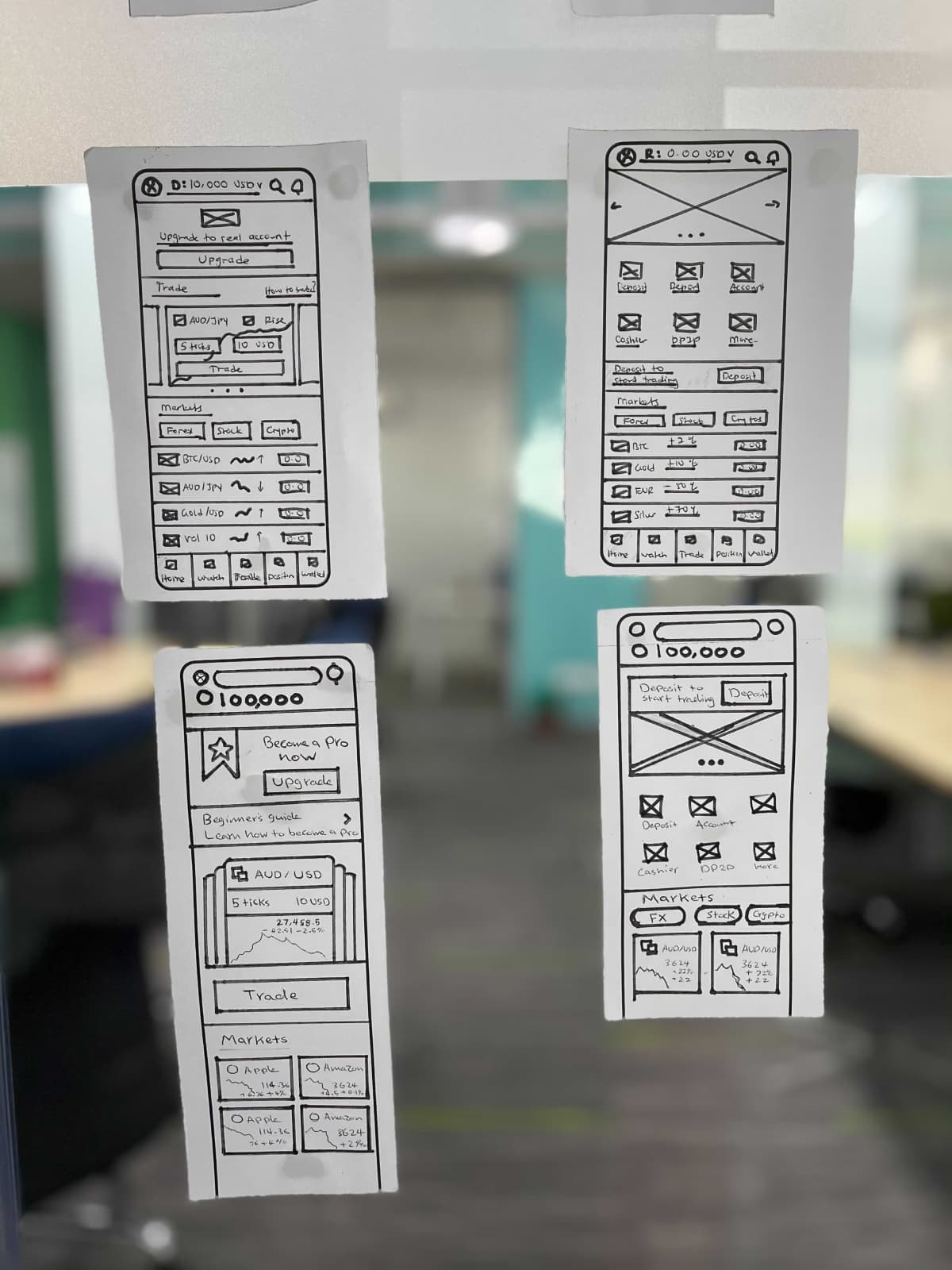
Full Feature Redesign
The Final Release
The October 2022 release included redesigned navigation with tabs for Home, Markets, Trade, Positions, and Cashier. It transformed Deriv's mobile presence, beating all projections and establishing Deriv as a serious mobile-first trading platform.
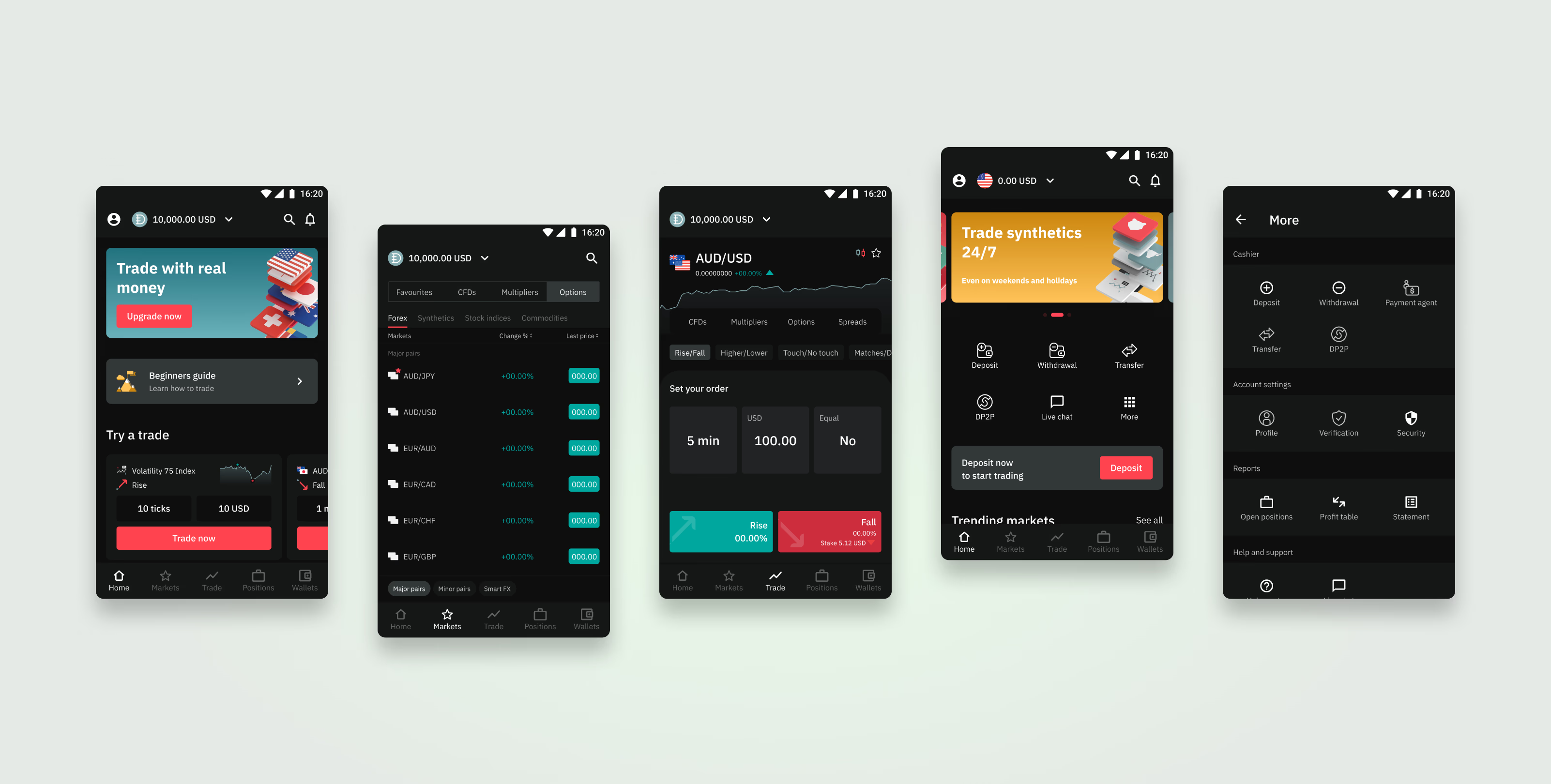
The Final Release - Complete Mobile App Interface
Impact
Downloads
In 18 months
Revenue
From mobile platform
New Users
Acquired via mobile app
App Rating
Improvement in store rating
By Q2 2023, mobile trading volume exceeded web for the first time in Deriv's history, marking a fundamental shift in how users engage with the platform.
